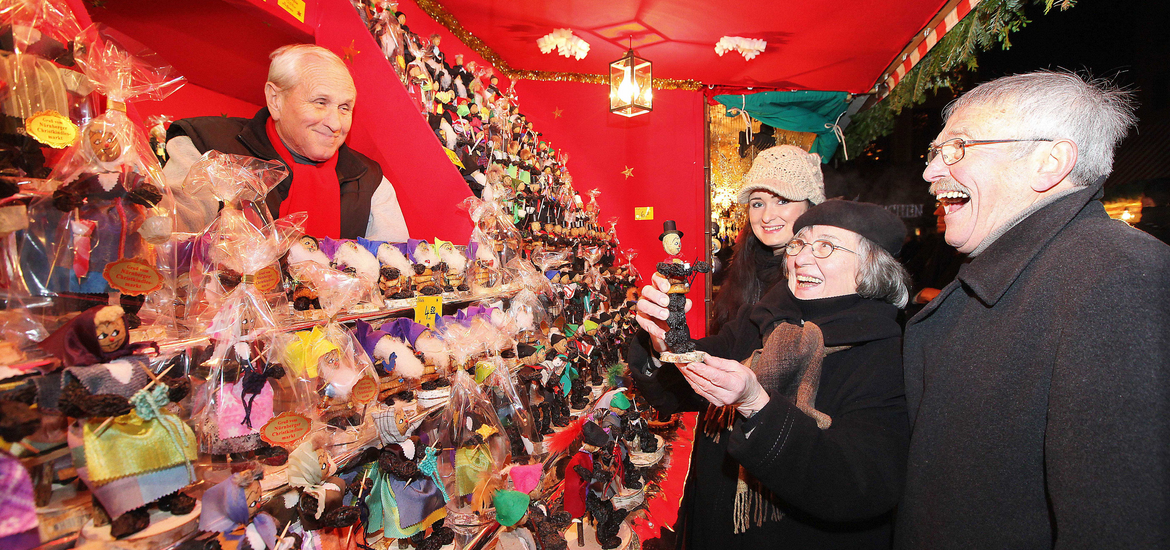Typical Christkindlesmarkt: Prune Men, Rauschgold Angels and Springerle
Many people claim that the Prune Man – known in the local dialect as the “Närmbercher Zwedschgermennla” – was invented here in Nuremberg, although the people of Dresden make the same claim with their “Pflaumentoffel”. Whatever the truth is, there is no denying that these little figures made of dried fruit have been a symbol of the Nuremberg Christmas Market for centuries. These figures, which are made out of dried figs and prunes strung on wire with a walnut for a head, were most likely originally toys for children.
Today they are a favorite souvenir and – since women’s liberation – there are not only prune men, but also prune women. Speaking of women: The Christkind is female too. And while you can’t take her home, you can take a little shining symbol of her: The famous Nuremberg Rauschgold angel. These angels, originally made of thinly beaten brass, are a special and very traditional symbol of the Nuremberg Christmas Market.
Another Nuremberg specialty is Springerle. These little cakes made from dried meringue, which are flavored with anise and have lovingly painted pictures on them, are theoretically a food – but are much too pretty and tough on your teeth. That’s why they’ve been used for centuries as a Christmas tree decoration. If you keep an eye open as you walk through the market, you’ll find stands here and there that offer these sweet works of art.
